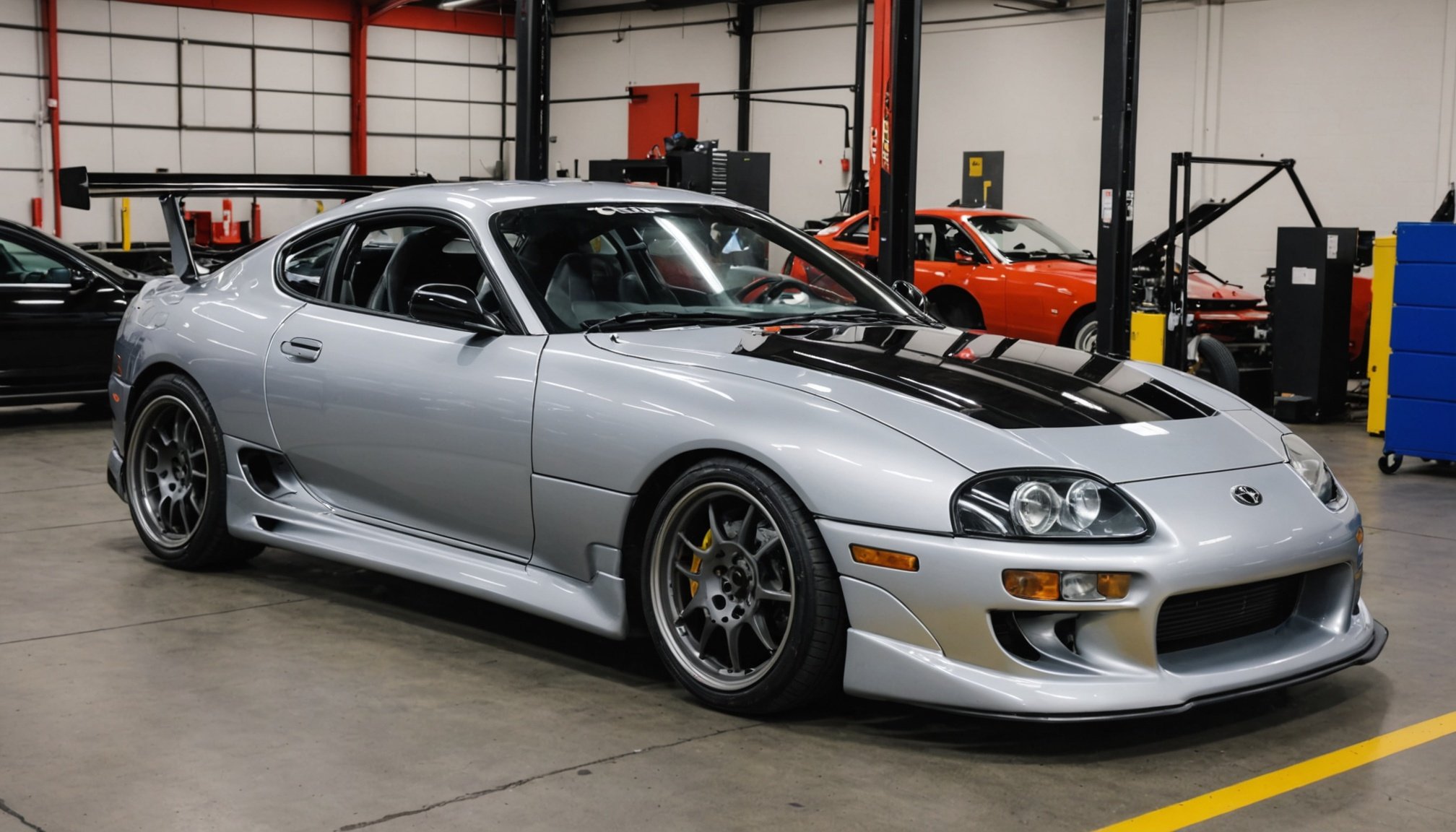Importance of Roll Cages for Track Safety
When it comes to track safety, a roll cage is an essential automotive upgrade. Not only does a roll cage protect the driver and passengers during an accident, but it also increases the car’s structural integrity. This is critical during high-speed runs where the risk of rolling over is amplified. By distributing the force of collisions more effectively, roll cages significantly enhance driver and passenger safety, offering peace of mind on track days.
Understanding regulatory standards is equally important. Racing environments mandate specific requirements for roll cages. Typically, these standards specify material types, such as DOM steel tubing, and design aspects, ensuring the roll cage provides maximum protection without hindering the driver’s visibility. Compliance with these regulations not only guarantees safety but also assures the roll cage meets competitive oversight.
Also read : Ultimate DIY Handbook: Transform Your Chevrolet Corvette’s Pedal Feel with a Hydraulic Clutch Conversion Kit
There are key benefits to installing a roll cage, including added safety and structural support. More than just compliance, roll cages improve crash survivability by keeping the cabin intact. Furthermore, knowing your car meets high standards allows for a focus on driving and performance rather than safety concerns. For those passionate about racing, understanding and valuing these components should be a priority.
Tools and Materials Needed for Installation
Every successful roll cage installation begins with the right tools and materials. Essential installation tools include a high-quality MIG or TIG welder, angle grinders, and tube benders. A measuring tape and marker are crucial for precise adjustments during the process.
This might interest you : Transform Your Nissan 350Z: The Complete Adjustable Rear Suspension Kit Upgrade for Superior Track Performance
For the roll cage’s main structure, roll cage materials such as DOM (Drawn Over Mandrel) steel tubing or chromoly steel are recommended due to their durability and safety. Both types of steel are preferred for their strength-to-weight ratio, ensuring the roll cage does not compromise vehicle performance.
Equipping yourself with a reliable saw for cutting and a drill for reinforcement points is equally important. To ensure the highest standards, consider procuring materials from trusted automotive suppliers known for quality steel tubing and specialized tools.
Remember, the combination of proper installation and superior materials is crucial for constructing a roll cage that not only meets regulatory standards but also excels in performance during track events. Seeking guidance from experienced professionals or reputable communities can also enhance your DIY approach, providing insights and recommendations tailored to your specific vehicle and racing requirements.
Step-by-Step Installation Process
Installing a roll cage is a crucial part of enhancing automotive safety and performance. Following a precise installation process ensures optimal outcomes.
Preparing the Vehicle
Begin by clearing the interior, removing seats and trim to make way for the roll cage. This preparation is crucial to avoid obstructions and ensure a clean workspace.
Installing the Main Structure
Align the tubing accurately, using a DIY guide as reference, and secure the main frame by following precise installation steps. Utilize tube benders for custom fits and verify alignment before proceeding.
Securing the Roll Cage
Upon alignment, ensure proper welding of joints, reinforcing for maximum durability. Focus on the base plates, as they bear significant loads. Double-check all connections for robustness.
This structured approach not only meets track safety standards but also solidifies confidence in your car’s protective capabilities. Each stage demands attention to detail, which contributes to a safer driving environment. For novices, ensuring measurements are accurate and welds are secure may require revisiting guides or consulting experienced professionals. By adhering to these steps, you can confidently enhance your vehicle’s safety on race days.
Safety Tips During Installation
When installing a roll cage, prioritising safety is crucial. Use appropriate personal protective equipment (PPE) such as safety goggles, gloves, and steel-toed boots. This ensures protection against common hazards like metal shards and welding sparks. Precision in measurements is vital. Accurately measuring and fitting the roll cage avoids misalignments, which can lead to structural weaknesses.
Be aware of common pitfalls, particularly during welding. Poor welds can compromise roll cage integrity. Always check the installation steps and rehearse before welding. If uncertain, consult instructional guides or professionals. Double-checking measurements also ensures that all parts align perfectly, which is essential for meeting automotive safety standards. Reinforced joints contribute to the cage’s durability under pressure.
Finally, ensure your workspace is organized and clear of unnecessary tools to prevent accidents. Maintaining a tidy workspace reduces the risk of tripping or damaging parts during assembly. Remember, consulting with skilled technicians or seeking expert advice when in doubt can enhance safety. Prioritizing these installation tips can lead to a successful and safe roll cage installation.
Compliance and Regulations
Ensuring roll cage compliance with racing regulations is crucial for both safety and competitiveness. Local and national standards vary, but adhere to specific requirements for construction, material, and design. These guidelines are formulated to protect drivers and passengers by maintaining high safety levels during automotive events.
Understanding and following automotive standards begins with familiarizing yourself with regulations from bodies like the FIA or SFI. These standards specify acceptable materials—often requiring certified steel such as DOM or chromoly—and outline structural specifications to optimize safety without obstructing driver operations.
To ensure your roll cage meets competitive guidelines, regular inspections are necessary. An official scrutineer typically checks for compliance before races. Meeting these specifications not only guarantees safety but also avoids disqualification from events.
Often, certification is necessary, which involves having the roll cage inspected and possibly tested for conformity with racing regulations. This ensures the cage’s construction withstands the forces experienced during high-speed collisions. Maintaining a clear understanding of these requirements shows a commitment to safety and integrity in motorsport, providing peace of mind during both practice and competition.
Potential Risks and How to Mitigate Them
Installation risks can pose challenges during roll cage setup, but understanding them helps in effective risk management. One of the primary hazards includes improper welding, which may compromise the structure’s integrity. It’s crucial to ensure welding is done correctly to maintain the cage’s functionality during high-stress conditions.
Automotive safety is paramount, and misaligned welds or poor fitting can lead to weaknesses. To minimise these risks, employing meticulous measurement techniques is vital. Double-check all alignments and secure joints thoroughly. This implies having a reliable measuring process and possibly rehearsing complex steps beforehand.
In terms of mitigating risks, if there’s any uncertainty, having an experienced technician on board is advisable. Their expertise can make the difference between a safe installation and one fraught with dangers. Moreover, continuous education on safety practices and retaining a clean work environment also lessen hazards. Keeping tools organised prevents accidents, while fostering a culture of safety awareness enhances efficacy. Prioritising these strategies ensures not only compliance with standards but also strengthens the safety aspect of your automotive project.
Benefits of a Properly Installed Roll Cage
A properly installed roll cage delivers significant advantages in terms of safety and performance. First and foremost, it boosts the structural integrity of the vehicle, ensuring that in the event of an accident, the cabin remains intact, which is crucial during high-speed track events. This enhancement in safety is particularly beneficial in protecting drivers and passengers from harm.
Furthermore, the presence of a robust roll cage positively impacts handling and stability. By stiffening the chassis, it reduces body flex, allowing the suspension to work more effectively. This results in improved cornering ability, which is essential for competitive racing situations.
From a performance standpoint, roll cages contribute to maintaining vehicle balance, leading to more predictable driving dynamics. This benefit extends to both casual enthusiasts and seasoned racers, providing added confidence in pushing the vehicle to its limits.
The long-term benefits of a high-quality roll cage installation cannot be overlooked. It offers peace of mind, knowing that the car complies with safety regulations and boosts driver assurance both on and off the track. Embracing these enhancements cements a commitment to excellence and security in motorsport.
Resources and Expert Advice
Having access to valuable automotive resources and expert insights can significantly ease the roll cage installation process. These resources provide crucial guidance, helping you navigate potential challenges.
Online Resources and Tutorials
The internet hosts a wealth of tutorials and guides that detail installation steps. Many skilled DIY enthusiasts share their experiences through video tutorials, which can be especially beneficial for visual learners. Popular automotive forums, such as Car Talk and Motorsport Forums, offer extensive threads where users exchange ideas and solve common issues faced during roll cage installations.
Expert Consultation
Whenever doubts arise during installation, consulting with automotive experts is advisable. Expert tips not only refine your technique but also ensure that your roll cage meets high safety standards. Professionals provide personalized guidance, advising on the best practices based on their experience.
Community Support
Engaging with communities dedicated to automotive safety and performance can enhance your learning curve. Platforms like Reddit’s Cars community are excellent for discussing the latest in specifications and innovations. By participating, you gain access to a wide pool of knowledge, diverse opinions, and innovative solutions that may not be found elsewhere. Engaging with other enthusiasts drives deeper understanding and effective risk management.



